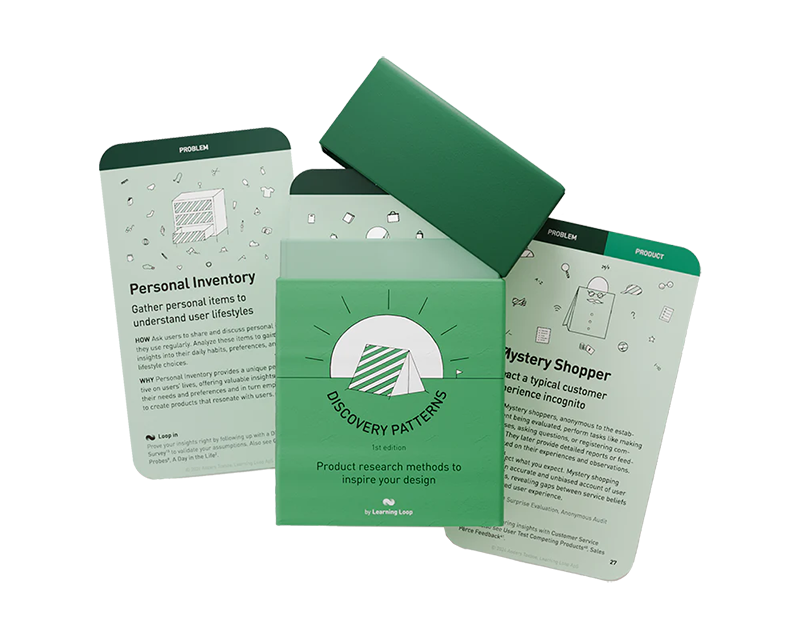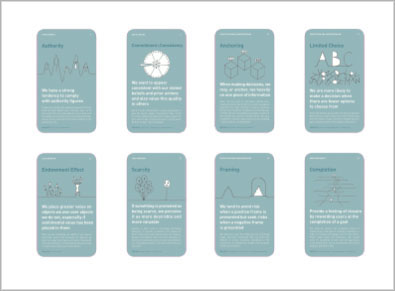
How: Follow and observe a user throughout a typical day in the location and context of their usual activities. Observe and record events to understand the activities from the participant's point of view. Bring a partner so you can compare notes.
Why: Understand the routine, context, and typical activities that the user performs unconsciously by mere habit.
A “Day in the Life” (DITL) study is a qualitative research technique used to uncover the realities of users’ daily experiences. Rooted in ethnographic methodology, it seeks to immerse researchers into the everyday environments of their participants to reveal natural behaviors, decision-making processes, and challenges that often go unnoticed in traditional studies. Unlike surveys or structured interviews that rely on what participants say, DITL studies focus on what people do—highlighting the often unspoken aspects of user experience. This immersive technique can be implemented through direct in-person observation, remote diary studies, or contextual inquiries, depending on the study goals and logistical constraints.
Why use a ‘Day in the Life’ study?
The strength of the DITL approach lies in its ability to uncover nuanced insights that are critical for human-centered design. Observing participants within the context of their routines helps researchers understand the full landscape of user needs, beyond product-specific use. These observations can expose pain points, inefficiencies, workarounds, and emotional responses, which are valuable inputs for product and service innovation. Teams use these insights to build empathy and align internal stakeholders around real-world user experiences. The DITL study becomes a way to not just understand the user, but to connect their lived reality directly to business and design strategy.
However, DITL studies are not always the most efficient approach. Their immersive nature means they are resource intensive, both in terms of time and labor. When budgets are tight or timelines compressed, lighter-weight methods such as interviews or surveys may be more appropriate. These alternatives can still yield valuable insights, particularly when breadth is prioritized over depth. For research questions that require validation or quantification, large-scale surveys or analytics are often more suitable. When the goal is to explore specific tasks or systems in detail rather than overall context, methods like usability testing or task analysis can complement or replace a DITL study. Each method has its place depending on the research question, and choosing the right tool is essential for effective outcomes.
Remote or in-person?
Deciding whether to conduct a DITL study remotely or in person is another important consideration. In-person studies provide the richest context, allowing researchers to pick up on non-verbal cues, environmental factors, and real-time behavior. They also enable more spontaneous interaction and clarification. On the other hand, remote DITL studies can be more practical, especially when working with geographically dispersed participants or when in-person interaction is not feasible. Using digital tools, participants can record their day through photos, videos, and diary entries, creating a self-guided yet insightful record of their experience. The choice between in-person and remote depends largely on the study’s scope, objectives, and logistical feasibility.
Example ‘Day in the Life’ study
To illustrate the application of this method, consider a hypothetical DITL study conducted for a productivity software company. The research team begins by recruiting participants who represent key user segments such as remote workers, small business owners, and corporate professionals. Screening ensures that participants’ daily routines align with the study goals. Once selected, participants are onboarded and given prompts designed to capture the nuances of their day. These prompts might ask about their first task of the morning, moments of frustration, tools they relied on, or points in the day where they felt most productive. By capturing these details across an entire day, the team builds a comprehensive view of how the product fits into and influences users’ routines.
Example diary prompts
- “What is the first thing you do when you start your day?”
- “Describe any moments of frustration today.”
- “Which tools or services did you use, and why?”
- “When did you feel most satisfied or productive today?”
Structuring the study involves more than just sending prompts.
The research team defines clear objectives and timelines, prepares documentation tools, and ensures ethical considerations like consent and privacy are addressed. Whether the study spans an entire day or specific time blocks depends on the user context and research goals. As participants document or are observed through their daily activities, researchers take detailed notes, paying attention to transitions, tools used, emotions expressed, and environmental context. The observational data is later synthesized into visual or written storyboards that chronologically represent the user’s experience. These storyboards become tools for internal alignment, making abstract insights concrete and actionable.
Executing a DITL study requires careful attention during fielding. If done in person, researchers must balance passive observation with the occasional need for clarification. Respecting participants’ boundaries and maintaining their comfort is critical. If conducted remotely, ensuring participant engagement over time and collecting high-quality entries can be a challenge, making onboarding and ongoing support essential. In either case, researchers must be prepared to navigate unexpected changes in participants’ schedules and ensure that the collected data remains authentic and useful.
Measuring success
The success of a DITL study is measured not by quantity but by the depth and relevance of the insights gathered. A successful study yields a deeper understanding of user needs, identifies new product or service opportunities, and helps foster alignment among stakeholders. The value of these outcomes can often be seen in the way research influences decision-making, shapes product roadmaps, or reframes problem statements.
Analyzing data from a DITL study involves careful review and synthesis. Researchers begin by organizing field notes, audio recordings, video clips, and diary entries. The goal is to identify patterns, contradictions, and themes across participants. Coding observations by context, behavior, need, and emotion helps to extract structured insight from unstructured data. Often, teams will use affinity mapping, journey mapping, or persona development to represent findings. These frameworks provide continuity between raw data and actionable insights, serving as bridges to future research or product development phases.
DITL studies rarely stand alone. They are most effective when paired with related research methods that either inform or extend the insights they produce. Preliminary interviews can help frame the scope of observation by revealing early hypotheses or areas of interest. After the DITL study, teams might deploy surveys to validate findings across a broader population or conduct usability tests to explore specific pain points that emerged. Journey maps, service blueprints, and ecosystem maps are often created based on DITL insights to inform cross-functional initiatives. The DITL study becomes one part of a layered research strategy aimed at delivering deeply informed, user-centered solutions.
Popular tools
The tools below will help you with the A Day in the Life play.
-
dscout
A mobile-based remote research platform purpose-built for diary studies. Participants capture videos, photos, and text entries as they go through their day, responding to scheduled prompts. Ideal for DITL research capturing natural behaviors and emotional context.
-
EthOS
A platform designed specifically for in-context and longitudinal qualitative research. Participants can record their day using multimedia inputs and researchers can customize task flows, making it well-suited for DITL studies with both structured and exploratory components.
-
Recollective
Enables guided diary studies where participants complete tasks and upload media (photos, video, audio, text). Offers flexible scheduling and researcher-participant interaction, supporting a DITL approach over multiple days or contexts.
-
Lookback
While primarily used for live UX sessions, Lookback allows participants to self-record walkthroughs or narrate daily activities. Can be adapted for DITL studies when paired with thoughtful prompts and asynchronous workflows.
Real life A Day in the Life examples
Steelcase
Steelcase conducted immersive research by spending time in offices to observe how people actually worked. The insights showed a disconnect between how office furniture was designed and how people collaborated or sought privacy. These observations led to the development of more flexible and functional workspace solutions that aligned with modern work behaviors.
General Motors
General Motors (GM) observed customers during their visits to car dealerships. By identifying pain points—such as confusion over pricing or discomfort in negotiation—they were able to redesign the dealership experience to be more transparent and customer-friendly, improving both satisfaction and sales outcomes.
A collection of clever product discovery methods that help you get to the bottom of customer needs and coining the right problem before building solutions. They are regularly used by product builders at companies like Google, Facebook, Dropbox, and Amazon.
Get your deck!Related plays
- IDEO Methods cards by IDEO
- Day in the life
- Spend a Day in the Life of Your Customers
- A Beginner’s Guide to Contextual Interviewing by Sarah Doody at UX Mastery
- Contextual Inquiry: Inspire Design by Observing and Interviewing Users in Their Context by Kim Flaherty at NN Group
- A Day In The Life at Think Design
- Day in the Life Studies: A Unique Method for Gathering User Context by Karen Eisenhauer at dscout

